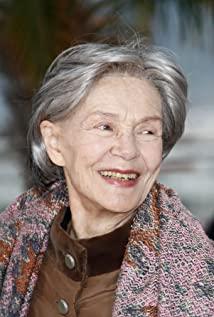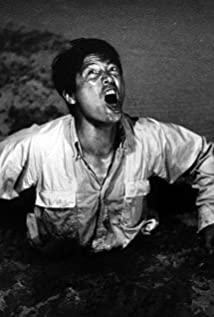Can't see anything, can't write anything, can't say anything. Really, it is because of incompetence that this movie came about. - Duras
If one must look for a film as an epoch-making milestone in the transition of Western cinema from the classical period to the modern period, then this film should undoubtedly be "Hiroshima Love". With its modern theme, ambiguous theme, shocking expression, and close connection with the new school of fiction, "Hiroshima Love" inspired and created modern cinema in multiple senses.
In May 1959, Alain Resnais brought his new film "Hiroshima Love", which he completed last year, to Cannes, France to participate in the 12th Film Festival held here. the entire Western film industry. It was considered by some to be an "all-time great work", "the end of classicism", "a decade ahead of its time and making all critics embarrassed."
"Love of Hiroshima" tells the story of the exotic love between a French actress who was filming in Japan and a Japanese architect, interspersed with Hiroshima, who was hit by the atomic bomb, and the love tragedy of the actress Girls' Generation in the small French town of Nevers and German soldiers during World War II. People say that "Hiroshima Love" is the turning point of the film. For the first time, bold and novel narrative techniques appeared in the film. The film took over the territory long held by literature. Surrealism and stream of consciousness intervened. The omniscient narrator-based realist performance made a break. The monologue of one or more characters replaces the narrator. The world is no longer depicted, but reflected in the mind, and audiences have to experience these films in new ways.
In the late 1950s, a group of new French directors set off an anti-traditional film movement, known as the "New Wave". Young directors headed by Godard despised all traditional film narrative methods, and their films were clearly modernist. . The "Left Bank" films that rose in the same period are usually regarded as a branch of the "New Wave". Alain Resnais is the representative of this group. The films they shoot focus on exploring people's inner consciousness, and they also use a lot of modern colors. The "stream of consciousness" technique of inversion of time and space.
The Left Bank faction was closely related to literature, and most of the "New Fiction" writers that prevailed at that time were members of the "Left Bank faction". Such as the representative of the "new novel" school Margaret Duras. The "New Fiction" writers brought a strong literary style to the "Left Bank" movies, so the "Left Bank" movies are also called "Writers' Movies". The term "writer's film" has a double meaning in a broad sense. One, it means that the director of the film is the creator of the film, and the film must have a strong personal style; Most of the original scripts are scripts created by writers for the film, and many of the expression techniques in the film come from the reference of literary expression techniques. "Hiroshima Love", written by Marguerite Duras and directed by Alain Resnais, has undoubtedly become the representative work of Left Bank writers' films.
The interweaving of love and anti-war criminal militarism in "Love of Hiroshima" benefits from the original script of Marguerite Duras, but throughout the creative process of Alain Resnais, contemporary historical events (the second time World wars and post-war events) and the impact of war on the fate of mankind have always been the focus of his selection of materials. Created in 1950, "Guernica" draws on Picasso's painting of the same name to protest the dehumanizing bombing of the famous Spanish city by the German fascists in 1937. In 1955, Alain Resnais shot "Night and Fog" again, re-editing the black and white photos obtained from the archives, and the newsreel to reproduce the brutal scenes of the Nazi concentration camps. And "Hiroshima Love" is the logical continuation and destination of these two works.
Excerpt: "The Complete Works of Duras - The Love of Hiroshima"
View more about Hiroshima Mon Amour reviews











